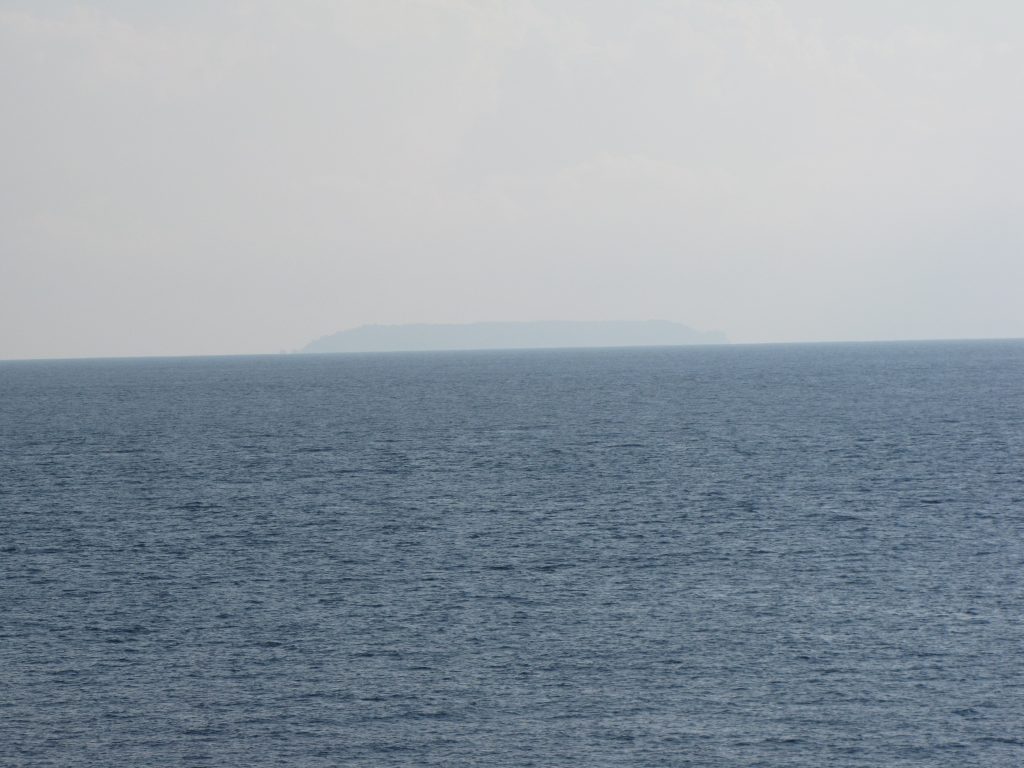
How do we know?
We are at the first station and the research has begun. We are close to shore, about 10 miles from the land which in terms of the ocean is very very close to land. Isla del Cano is all we can see, other than blue water and blue skies.
If you look closely at this picture you may be able to see the island. Compare it to the one below. It is quiet warm and humid outside (I love it!) and actually not too cool inside (I don’t like too much air conditioning).
For the first two drilling holes (one at each of our two sites), we are using the technique called Logging While Drilling (LWD). Here is a perfect example of answering the question how do we know. LWD is a set of instruments with several sensors that detect porosity, resistivity, density and more. From what I’m learning, this technique of logging (collecting data with electronic sensors) is important for the drilling while coring. One of the scientists describes the process like taking an x-ray as the sensors move through the hole. It tells us what to expect when drilling for rock cores (physical samples). There is a drill bit first, drilling a 17 inch diameter hole, and then a set of sensors on the line.
We have 57 scientists and technicians who are now thinking hard about this question of how do we know. The international team includes experienced petrologists and structural geologists to graduate students in the microbiology and paleontology groups, supported by experienced technicians. They need to be prepared to defend their conclusions with the best data that they can collect.
There are five teams who will be examining, testing and sampling the rock core: core description (geology), paleomagnetics, physical properties (geophysics), geochemistry (organic, inorganic and microbiology), and micropaleontology. The teams are working to develop the sampling plans. This morning’s meeting is all about figuring out how everyone can get what they need. It is great to learn about everyone’s individual research questions and all the different techniques. Some people need 15 cc of material while others need the material as soon as it reaches the surface (i.e. to collect gases that will disappear or change with exposure to air). I’ll write more about this as the core comes up.
There are five teams who will be examining, testing and sampling the rock core: core description (geology), paleomagnetics, physical properties (geophysics), geochemistry (organic, inorganic and microbiology), and micropaleontology. The teams are working to develop the sampling plans. This morning’s meeting is all about figuring out how everyone can get what they need. It is great to learn about everyone’s individual research questions and all the different techniques. Some people need 15 cc of material while others need the material as soon as it reaches the surface (i.e. to collect gases that will disappear or change with exposure to air). I’ll write more about this as the core comes up.
.jpg)